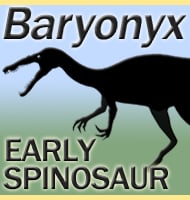Khaan
In Depth Khaan is a genus of small oviraptorid dinosaur that lived in Mongolia during the Late Cretaceous. Studies into Khaan individuals may have revealed differences between males and females. On some specimens, the caudal (tail) vertebrae have reduced chevrons, and this has been seen as a sign of a female. The reduced chevrons at … Read more
